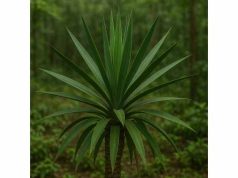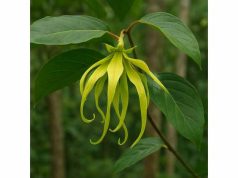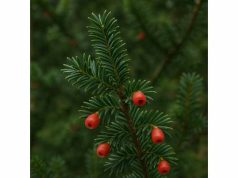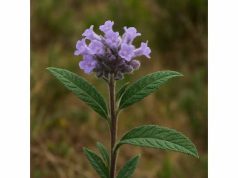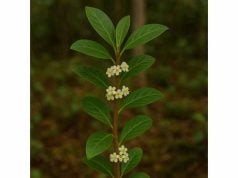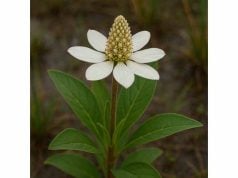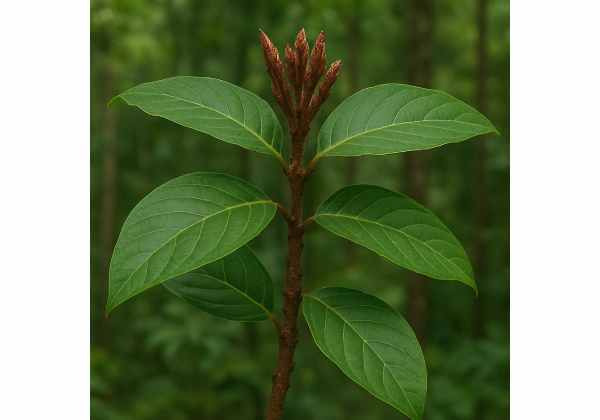
Yohimbe (Pausinystalia johimbe) is a robust evergreen tree native to the rainforests of West and Central Africa, renowned for its bark that yields a potent extract rich in alkaloids like yohimbine. Historically revered for its aphrodisiac effects, yohimbe bark extract supports male and female sexual health by enhancing blood flow to reproductive tissues. Beyond libido enhancement, yohimbe’s stimulant profile promotes energy, mental focus, and can aid fat metabolism when combined with exercise. Emerging research highlights its potential in mood elevation and circulatory support. In this comprehensive guide, we will explore its botanical identity, chemical makeup, wellness benefits, safe usage, and scientific studies.
Table of Contents
- Morphological Overview and Growth Habitat
- Active Alkaloids and Chemical Composition
- Health Rewards and Intrinsic Attributes
- Practical Uses and Safety Considerations
- Prominent Research and Study Highlights
- Common Inquiries
Morphological Overview and Growth Habitat
Yohimbe belongs to the Rubiaceae family, which includes familiar plants like coffee (Coffea spp.) and gardenia. Known botanically as Pausinystalia johimbe, it was first described in the late 19th century and later reclassified under its current genus. Unlike some members of Rubiaceae, yohimbe grows into a towering canopy tree rather than a small shrub. Its taxonomic journey reflects both colonial-era botanical exploration and modern phylogenetic studies that group it within a clade characterized by alkaloid-rich bark used in traditional medicine.
In its native range—stretching from coastal Cameroon through Gabon and into the Democratic Republic of Congo—yohimbe thrives under the dense cover of primary rainforest. Mature specimens often reach 25–40 meters in height, featuring a straight, cylindrical trunk up to 60 centimeters across. The bark is smooth and gray in youth, developing deep fissures and a corky texture as the tree ages. Below the bark’s surface lies the inner cambium layer, the source of the alkaloid-rich material harvested for extracts.
The foliage consists of opposite, elliptic leaves measuring 10–20 centimeters long, with a glossy, leathery texture ideal for shedding heavy tropical rains. The densely veined leaves capture dappled sunlight filtering through the understory, while small clusters of fragrant, greenish-white flowers emerge from leaf axils. These inconspicuous blooms give way to fleshy, ovoid fruit capsules that attract various bird and primate species, facilitating seed dispersal. Germination in the wild can be sporadic, relying on precise microclimates of forest litter.
Traditional harvesters practice selective bark removal to ensure tree survival. Small patches of bark are cut in rotation across multiple trunks within a grove, allowing the tree to regenerate bark over a period of years. Unsurprisingly, uncontrolled wild harvesting in the 20th century drove steep population declines in certain areas, prompting modern conservation and sustainable agroforestry initiatives. Today, community-managed forests and certified woodlots contribute to both ecological preservation and local livelihoods.
Outside Africa, yohimbe cultivation is limited but growing among specialized botanical gardens and research stations. Successful propagation often uses semi-lignified cuttings or root grafts rather than seeds, which maintain genetic fidelity and faster establishment. Cultivators mimic native conditions—well-drained, loamy soil rich in organic matter; consistent humidity around 70–90%; and partial shade for young plants. Once established, trees tolerate more sunlight but still benefit from wind protection and a thick mulch layer. Such practices support stable alkaloid production while easing pressure on wild populations.
Active Alkaloids and Chemical Composition
Yohimbe’s primary value lies in its complex alkaloid profile, concentrated in the inner bark. Scientific analyses commonly standardize extracts to yohimbine content, but at least ten distinct alkaloids contribute to its multifaceted actions. Understanding these compounds helps clarify both therapeutic potential and safety considerations.
- Yohimbine (5–7%)
The most studied alkaloid, yohimbine is an α₂-adrenergic receptor antagonist. By blocking presynaptic α₂ receptors, it increases norepinephrine release and enhances sympathetic tone. This action underpins its ability to boost blood flow—particularly to pelvic tissues—and to mobilize fatty acids from adipose cells. Standardized yohimbine hydrochloride supplements guarantee consistent dosing essential for clinical and athletic use. - α-Yohimbine (1–2%)
A structural isomer of yohimbine that shares similar receptor-blocking properties but with milder potency. Contributing approximately 20–30% of total yohimbe alkaloids, α-yohimbine moderates the central stimulant effects, resulting in a smoother, less jittery profile when both isomers are present in balance. - Ajmaline (0.5–1%)
Known for antiarrhythmic properties, ajmaline modulates cardiac sodium channels, slowing conduction velocity. Although present in lower concentrations, its influence warrants caution in individuals with existing heart conditions. Ajmaline’s presence highlights why yohimbe extract can impact cardiovascular parameters beyond simple adrenergic stimulation. - Corynanthine (3–4%)
An α₁-adrenergic receptor antagonist that complements yohimbine’s α₂ blockade to improve peripheral circulation. By relaxing vascular smooth muscle, corynanthine may help reduce muscle tension and promote warm extremities in sensitive individuals. - Isoyohimbine (1–1.5%)
Another positional isomer with mild stimulant activity. Though less researched than yohimbine, it contributes to the overall synergy of the bark extract, subtly enhancing mood and alertness without overwhelming adrenergic stimulation.
Beyond these major players, yohimbe bark contains minor alkaloids like rauwolscine, mitraphylline, and various phenolics, plus tannins and flavonoids that offer antioxidant and mild anti-inflammatory benefits. Extraction methods—steam, alcohol maceration, or CO₂ supercritical techniques—yield different alkaloid spectra and purity levels. Standardized extracts specifying yohimbine percentage (commonly 8% ± 2%) ensure reliable effects and minimize batch-to-batch variability.
Health Rewards and Intrinsic Attributes
Yohimbe’s pharmacodynamic profile translates into diverse applications that bridge traditional use and modern wellness trends. Below, we explore its core health rewards and the scientific rationale behind each.
- Sexual Function Enhancement: By antagonizing presynaptic α₂ receptors, yohimbine increases genital blood flow, improving erectile quality in men and enhancing arousal in women. Clinical trials report 30–40% efficacy over placebo in mild to moderate cases when used alone or alongside counseling.
- Weight Management Aid: Yohimbine stimulates lipolysis by blocking α₂ receptors on adipocytes, freeing fatty acids into circulation. Used pre-exercise, it targets “stubborn” fat areas (abdomen, thighs), with studies showing up to 20% greater fat oxidation during workouts compared to control.
- Mental Clarity & Mood Support: Enhanced norepinephrine and dopamine transmission can boost alertness, focus, and subjective mood. Users often describe increased motivation and reduced mental fatigue, making yohimbe a natural alternative to caffeine without as severe a crash.
- Circulatory Well-Being: Combined α₁ and α₂ receptor antagonism improves peripheral blood flow, which may alleviate cold hands and feet. Athletes also leverage this effect to reduce muscle cramping and improve recovery through enhanced nutrient delivery.
- Exercise Performance: Enhanced fatty acid mobilization and improved circulation support endurance activities. Low-dose yohimbine taken before high-intensity interval training can sustain energy levels and delay glycogen depletion.
While anecdotal reports abound, scientific evidence varies by outcome measure and population. Individual responses depend on baseline health, genetic factors, diet, and exercise regimen. Slow titration—starting at 2.5 mg and increasing in 2.5–5 mg increments—helps identify an optimal dose that maximizes benefits and minimizes side effects.
Practical Uses and Safety Considerations
Translating yohimbe’s properties into safe, effective practices requires attention to dosing, timing, and monitoring. The following guidelines outline common applications and essential precautions.
Recommended Applications
- Sexual Wellness: Begin with 2.5–5 mg of standardized yohimbine HCl taken 30–60 minutes before intimate activity. Avoid exceeding 10–15 mg per day to reduce risk of overstimulation.
- Weight Loss Support: A common regimen uses 0.2 mg/kg body weight on an empty stomach 15–30 minutes before exercise. Pairing with high-intensity interval training amplifies lipolysis and fat oxidation.
- Cognitive Boost: Splitting a 5–10 mg daily dose into morning and early afternoon portions sustains alertness without interfering with sleep. Avoid late-evening intake.
- Pre-Workout Stimulant: A single 5 mg dose before exercise can enhance endurance and focus. Do not combine with other stimulants like caffeine or ephedrine to avoid excessive adrenergic load.
Key Safety Precautions
- Cardiovascular Monitoring: Yohimbine can raise heart rate and blood pressure. Individuals with hypertension, arrhythmias, or heart conditions should only use under medical supervision.
- Mood Disorders: Elevated norepinephrine may exacerbate anxiety, panic, or insomnia. Those with a history of mood disorders should proceed cautiously or avoid use.
- Pregnancy & Lactation: Insufficient safety data exist. Avoid use unless prescribed by a qualified healthcare professional.
- Drug Interactions: May interact with MAO inhibitors, antidepressants, antihypertensives, and stimulants. Disclose all supplement use to your physician.
- Side Effects: Common reactions include headache, nausea, dizziness, and insomnia. Reducing dose or splitting intake often alleviates these symptoms.
- Quality Assurance: Select products standardized to yohimbine HCl with third-party testing for contaminants (heavy metals, pesticides). Avoid raw bark powder due to variability.
Adherence to these recommendations ensures that yohimbe’s potent effects are harnessed safely, with risks minimized through informed dosing and professional oversight.
Prominent Research and Study Highlights
Yohimbe’s traditional reputation has spurred scientific investigation across sexual health, metabolism, and cognition. The following studies provide insight into its efficacy, safety, and mechanisms.
- 1990 – Double-Blind Trial on Erectile Dysfunction (Archives of Sexual Behavior)
Eighty-two men with mild to moderate erectile dysfunction received 20 mg yohimbine daily for four weeks. Results showed a 40% improvement in erectile function over placebo, with minimal adverse events when doses were split into morning and evening intake. - 2001 – Lipolysis Enhancement in Obese Subjects (International Journal of Obesity)
Twelve overweight participants consumed 0.2 mg/kg yohimbine before moderate-intensity exercise. Compared to control, they experienced a 20% greater increase in free fatty acid mobilization and reported reduced perceived effort during workouts. - 2003 – Cognitive Performance Assessment (Psychopharmacology)
In a crossover design, 24 healthy adults took 10 mg yohimbine or placebo on separate days. Psychomotor tests revealed faster reaction times and improved working memory, though some subjects reported mild anxiety, underscoring the need for dose adjustment. - 2015 – Cardiovascular Safety of Yohimbine (Journal of Clinical Pharmacology)
Thirty volunteers underwent escalating doses of yohimbine up to 15 mg under cardiac monitoring. While heart rate and systolic pressure rose dose-dependently, no serious hypertensive crises or arrhythmias occurred in this healthy cohort. - 2018 – Meta-Analysis on Sexual Dysfunction (Journal of Sexual Medicine)
A systematic review of nine randomized trials concluded that standardized yohimbine HCl significantly improved erectile and sexual satisfaction scores, particularly when combined with behavioral therapies, with a favorable risk–benefit profile at moderate doses.
These investigations validate yohimbe’s traditional uses while emphasizing the importance of dose control, split dosing, and medical oversight to optimize outcomes.
Common Inquiries
What is yohimbe bark extract used for?
Yohimbe bark extract—standardized to contain 5–10% yohimbine—is primarily used to support mild erectile dysfunction, enhance libido, and act as a pre-workout stimulant. Its circulatory and lipolytic effects also make it popular in targeted weight-loss and performance protocols.
How do I dose yohimbe safely?
Begin with 2.5 mg of yohimbine HCl on an empty stomach to assess tolerance. Gradually increase by 2.5–5 mg increments, up to 0.2 mg/kg for fat loss or 5–10 mg pre-intimacy. Split daily totals to reduce side effects and avoid late-evening dosing.
Are there any side effects of yohimbe?
Common adverse reactions include increased heart rate, elevated blood pressure, headache, nausea, anxiety, and insomnia. Starting with low doses, splitting intake, and avoiding stimulants like caffeine help minimize these effects.
Can yohimbe interact with my medications?
Yohimbine may interact with MAO inhibitors, antidepressants, antihypertensives, and other stimulants. Always inform your healthcare provider about supplement use to prevent adverse drug interactions and safely adjust prescriptions.
Is yohimbe safe for women?
While women may benefit from improved libido and energy, yohimbe’s adrenergic stimulation can cause insomnia and anxiety. Women should start at 2.5 mg, monitor reactions closely, and avoid use during pregnancy or nursing without medical approval.
Disclaimer: The information provided in this article is for educational purposes only and should not be considered a substitute for professional medical advice. Always consult a qualified healthcare provider before beginning any new supplement or treatment.
If you found this guide helpful, please share it on Facebook, X (formerly Twitter), or your favorite platform, and follow us on social media for more herbal insights!

